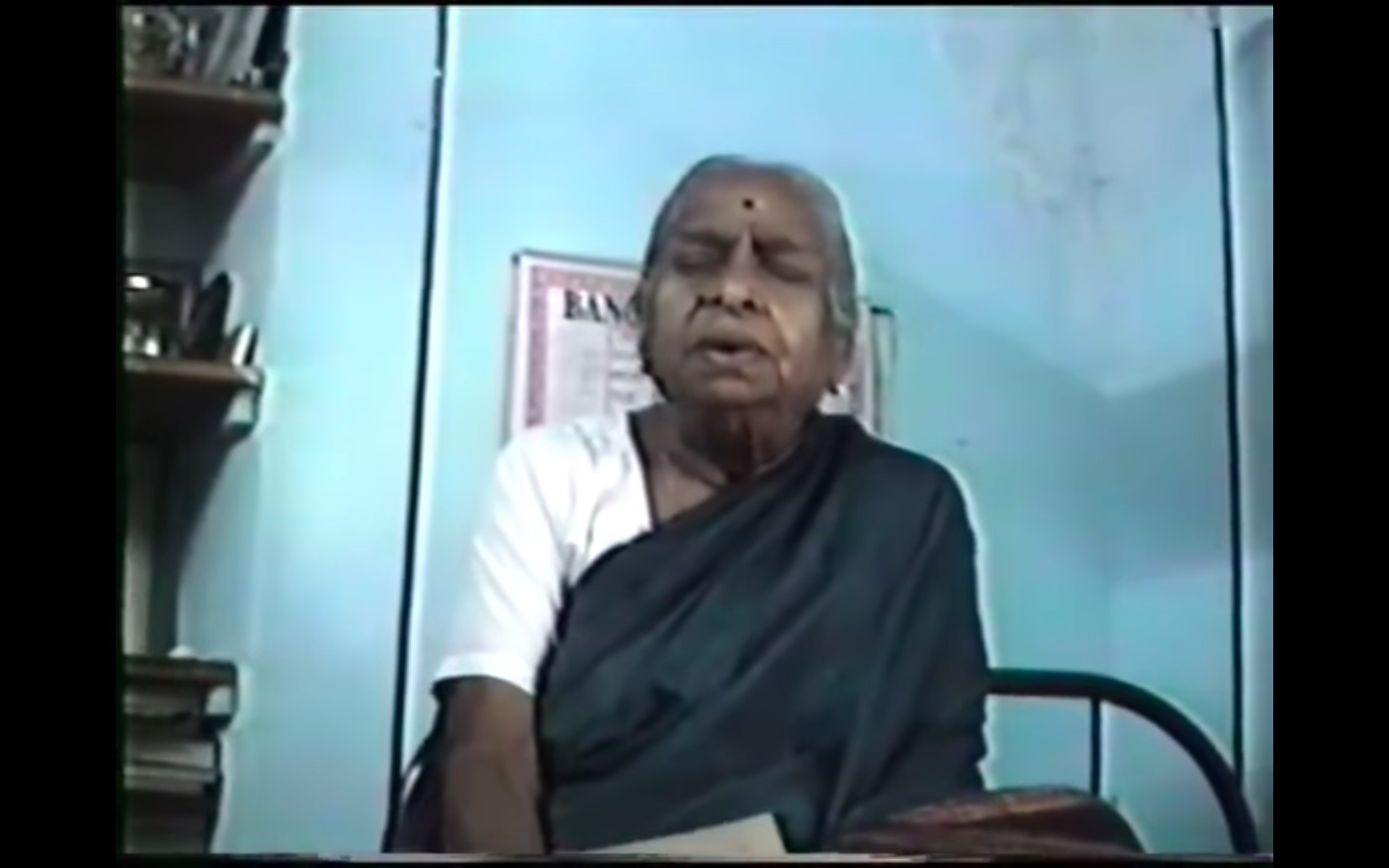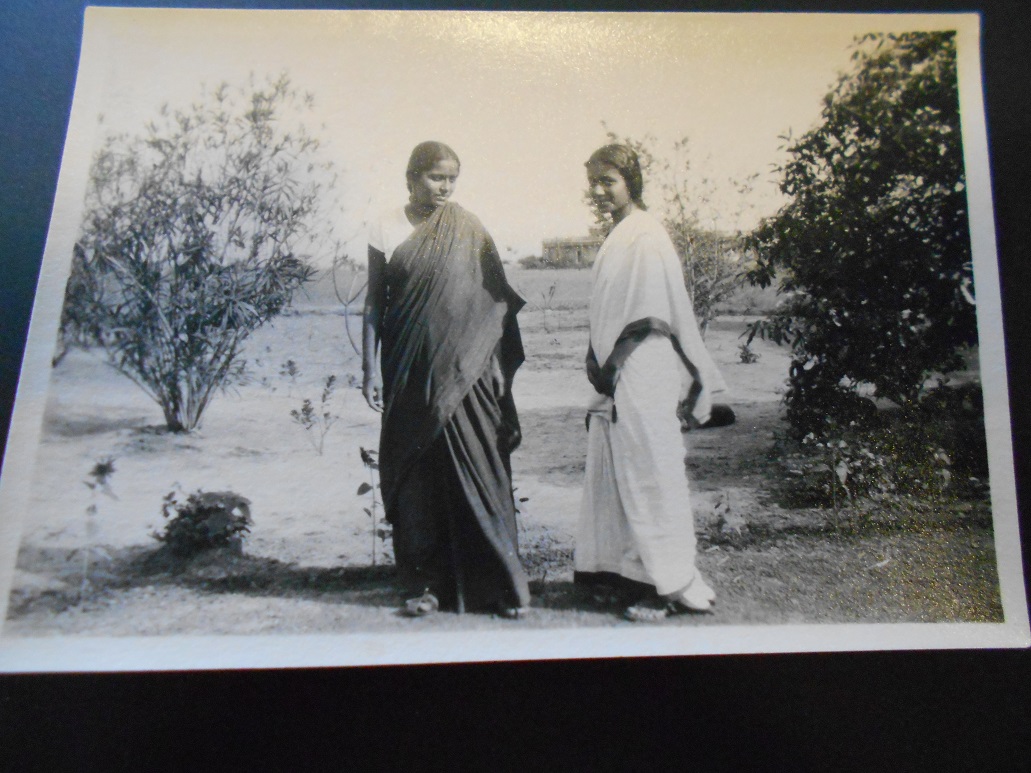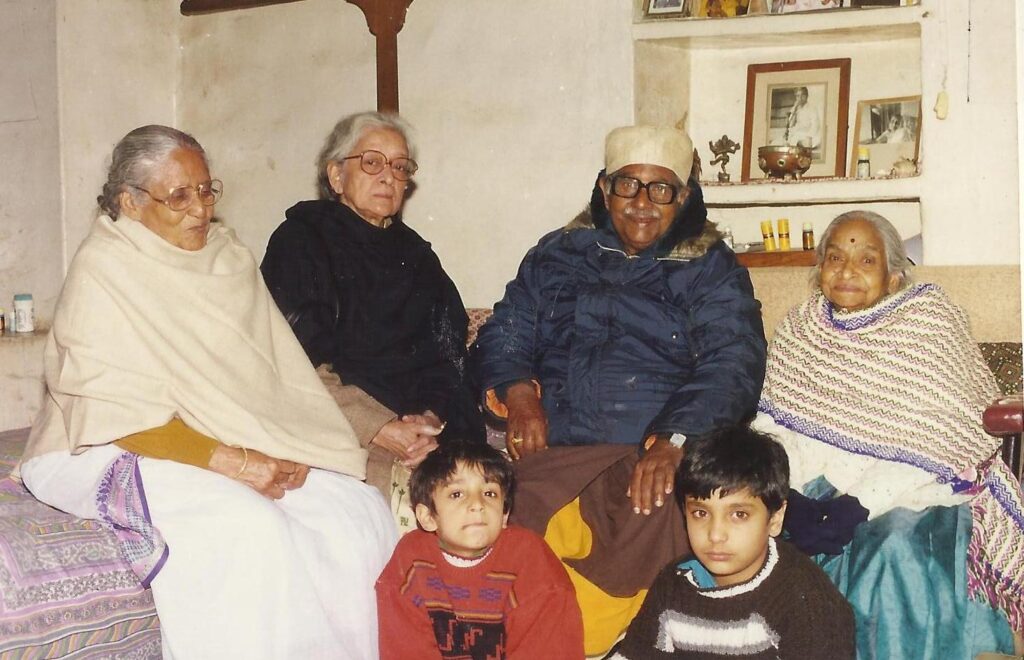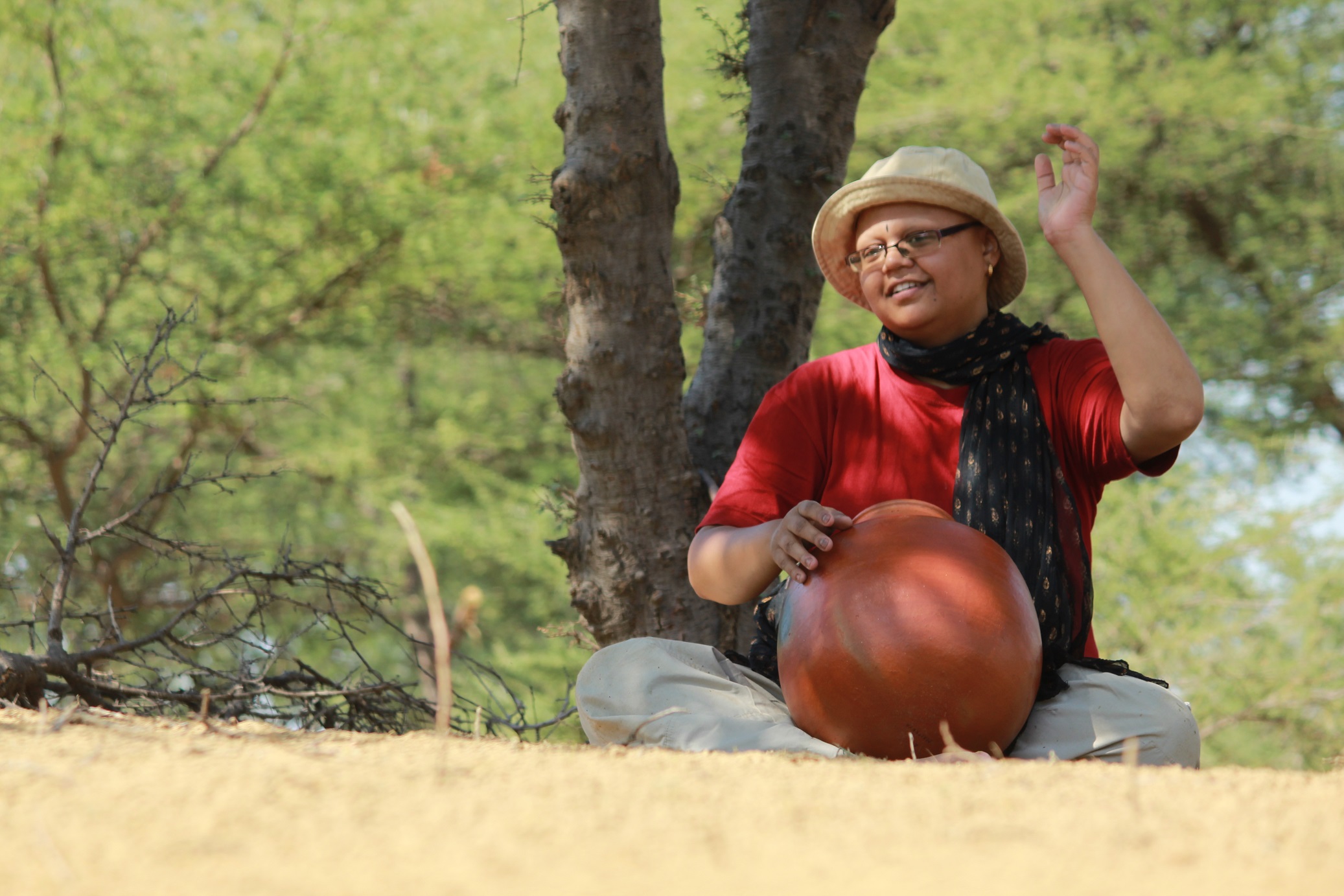
Listening to Savitiri Govind with Sumana Chandrasekhar
Savitri Govind, who later became the famous Rabindrasangit singer Savitri Krishnan, was 18 when Arnold Bake recorded her in Santiniketan in 1931. She had only just arrived from the Adyar Theosophical school near Madras (Chennai), after Rabindranath had heard her sing there and recognised what a talent she was. Rabindranath heard her sing Muthuswamy Dikshitar’s ‘Meenakshi pe mudam’ and from her song was born the Rabindrasangit ‘Basanti he bhubanamohini’, which Savitri herself recorded.
Years later, in this video recorded in Bangalore by Anjana Dey, who is related to Nandalal Bose through her mother and therefore has strong connections with Santiniketan, Savitri remembered the day Rabindranath had called her over and given her the words of his song to sing and how Dinendranath had tears in his eyes when he listened to the song.

Savitri Krishnan singing Basanti he bhubanamohini in her home in Bangalore in 1992. (Still from video by Anjana Dey)
I tried hard to contact some family of Savitri Krishnan’s but failed. When I found this video on youtube, I contacted Anjana Dey, who lives in Canada, and she was very warm in her response. I asked her if there was more material with her which she would be willing to share with me and also if she knew the whereabouts of Savitri’s family. She said there wasn’t much more to tell except that Savitri Krishnan nursed a wound about never being properly recorded.
Perhaps she did not know that in the archives of the Berlin Phonogramm-Archiv and the British Library her voice as a very young girl lay preserved, never to age. How would she feel if she heard her voice coming to her from her past? What would she think of the wax cylinder recordings? Would she say, oh, but that is so noisy! What would she remember of that day or those days when Arnold Bake had recorded her? Bake recorded several of her songs, which can be heard on the British Library Sound Archives website – Mira bhajans and Kabir and Rabindrasangit and a song of Harindranath Chattopadhyay. Bake also took photos of her.

Savitri and friend, Santiniketan. Source: Special Collections, Leiden University Library. I took this photo while working in the library in 2015.
‘The South Indian girl, Savitri, with a friend. S. wears the dark Sari. She’s an enormously gifted and funny child. A while ago, I don’t know if I wrote about it already, she danced with that red shawl not quite unlike a Hungarian folk dancer. We laughed like we hadn’t in months,’ Bake wrote explaining the photo he sent to mother with his letter of 29 April 1931.
She seems to have retained this spirit all through her life. I found a blog note on her and a response I found particularly interesting: ‘I knew her well in Nova Scotia, we started a school for dropouts and exceptional students. Everyone called her Ama. She was a calming influence & encouraged nutrition with an endless supply of fresh fruit for those who sat with her surrounded by her musical instruments. Sage & yet daring. I played tennis with her when she was over 65 & she was always up for adventure. I drove her around in my old car, happily. She loved to sing and laugh.’ (Bruce Maclellan, 9 May 2019)

Santiniketan, 1998. Savitri Govind, Krishnan now, comes hack to the asram. From left to right, Ila Ghose, Suchitra Mitra, Santidev Ghose and Savitri. Not sure about the identity of the children. Photo courtesy: Samik Ghosh.
Arnold Bake was fascinated by the way she sang the ‘Meenakshi’ and he wrote to his mother, ‘this one Sanskrit song that Savitri sung, I would not be able to do that even after years.’ Listening with others to Savitri’s songs on Arnold Bake’s cylinders, including with young scholars of music and practitioners such as Budhaditya Bhattacharyya what was striking to all of us was that, if we didn’t know who the singer was, Savitri’s Mira and Kabir bhajans could be mistaken for a Bengali’s. In my thesis I muse on this and speculate on the reasons for this.
Budhaditya sent these voice messages to me on Whatsapp in May 2021. Around this time, Budhaditya, another PhD scholar at the University of Amsterdam, Mriganka Mukhopadhyay and I were talking among ourselves about Adyar and the connection of the Theosophical Society with Visva Bharati, Tagore’s Jana Gana Mana (which was to become the Indian national anthem) as it was notated and preserved by the Irish Theosophist and musician Margaret Cousins in 1919 and such matters. This was helping me very much to sharpen my understanding of the songs of Savitri Govind that Bake had recorded.
Carnatic vocalist and ghatam player Sumana Chadrasekhar responded on more or less these terms when she listened to Bake’s recordings of Savitri. She recorded herself and sent me her recordings from Bangalore. I am very grateful to Sumana for her perspective.

Sumana Chandrashekar also sent me this photograph.
Sumana explains the meaning of Muthuswamy Dikshitar’s Meenakshi
Sumana explains the particularity of Savitri’s style and the absence of gamaka
Sumana sings Meenakshi me mudam dehi
How Tagore uses the structure of Purvi Kalyani and liberties he takes
- Laksmisvar Sinha, a Doorway to Many Worlds
- Imam Bux Boyati of Mymensingh at Gurusaday Dutt’s Suri Mela
- Motru Sen and Jaya Tagore: From Image to Sound
- Mapara’s Cradle Song and Shruthi Vishwanath’s Response
- The Bauls of Kenduli in 1932
- Pinakin Trivedi and the Autograph Book
- Roof-Making Songs of Baori Women
- From Ranjan Shaha to Kobiyal Akhtar Shah in Kasba, Birbhum
- Kusum, the Nachni and her Jhumur
- From Gurudayal Malik to Mohan Singh Khangura and Madangopal Singh
